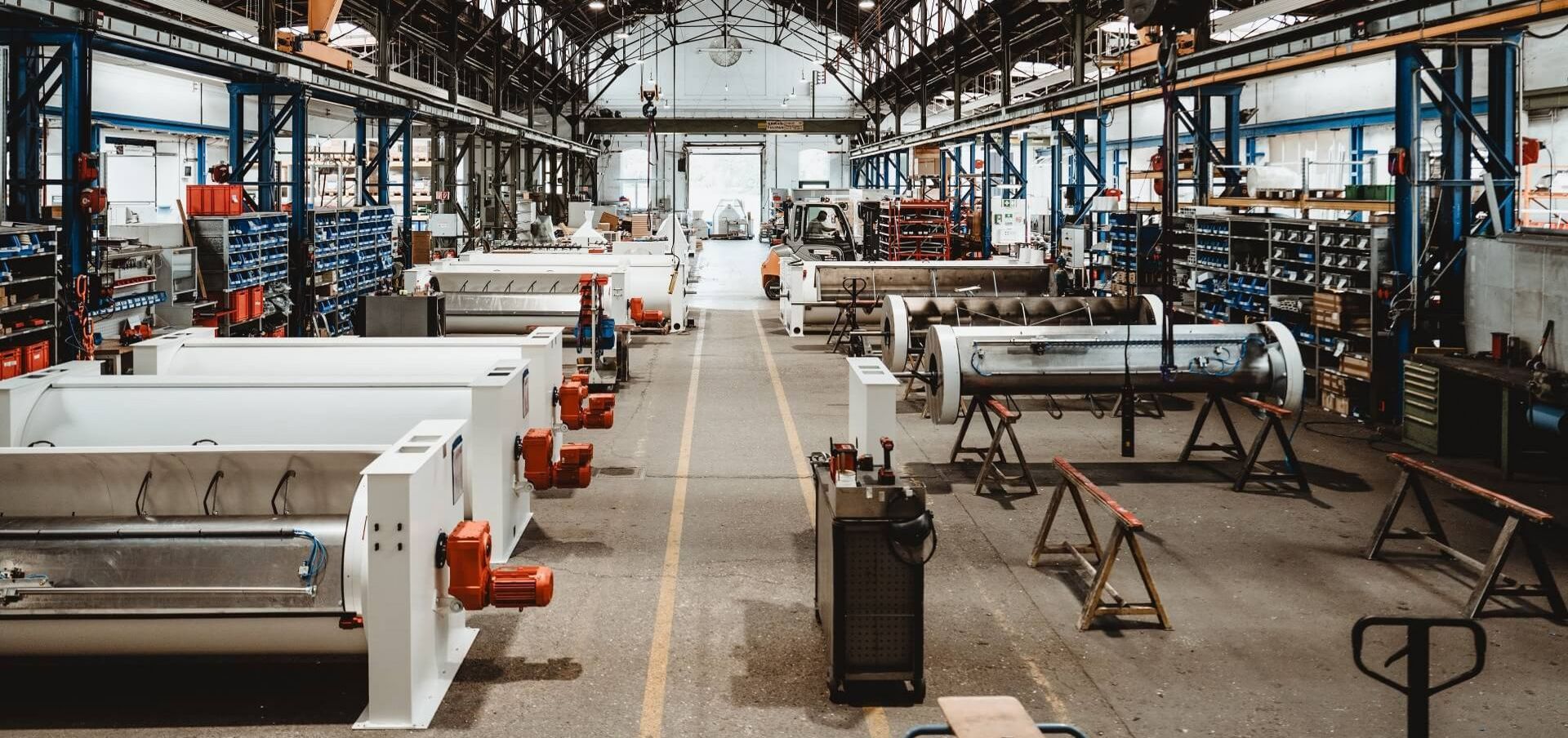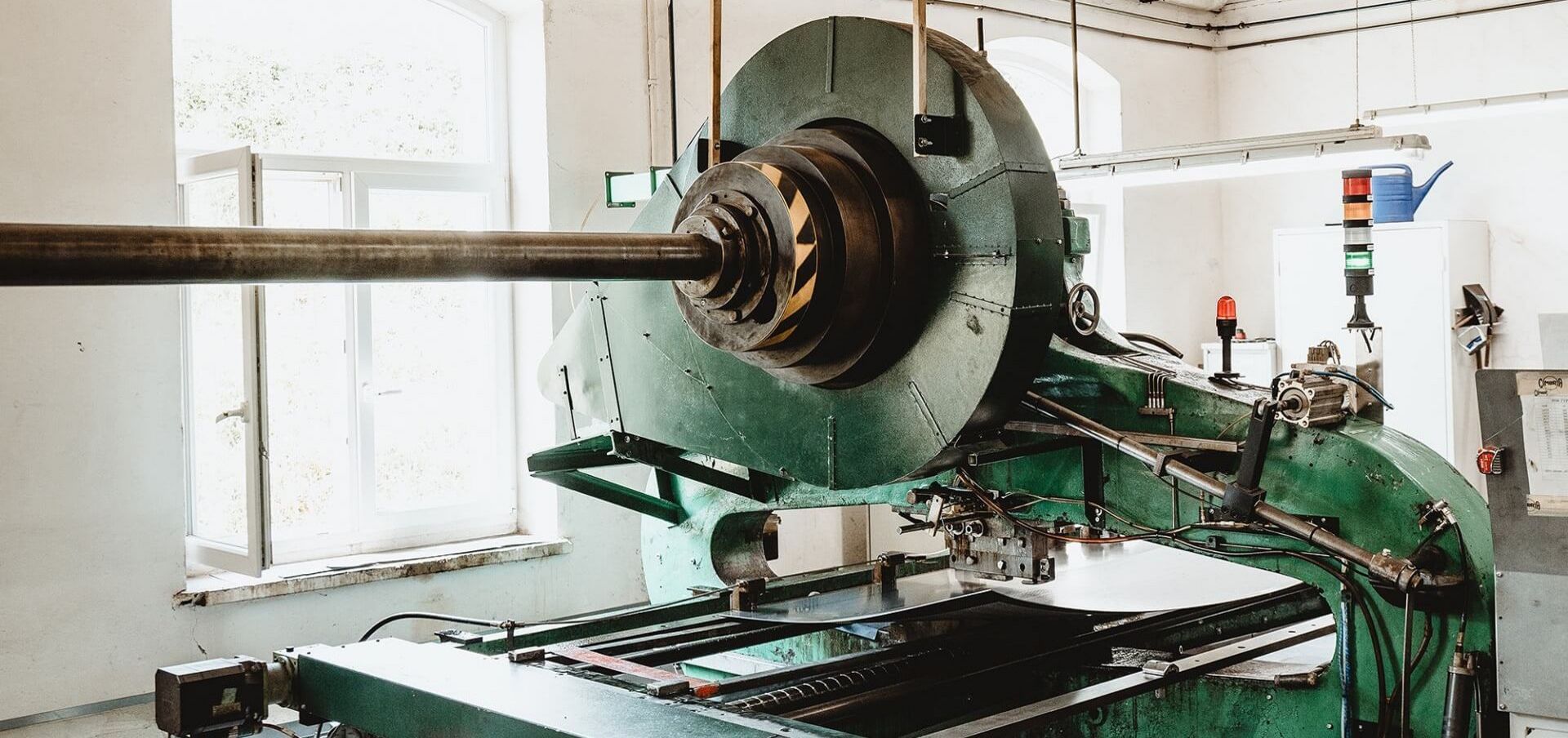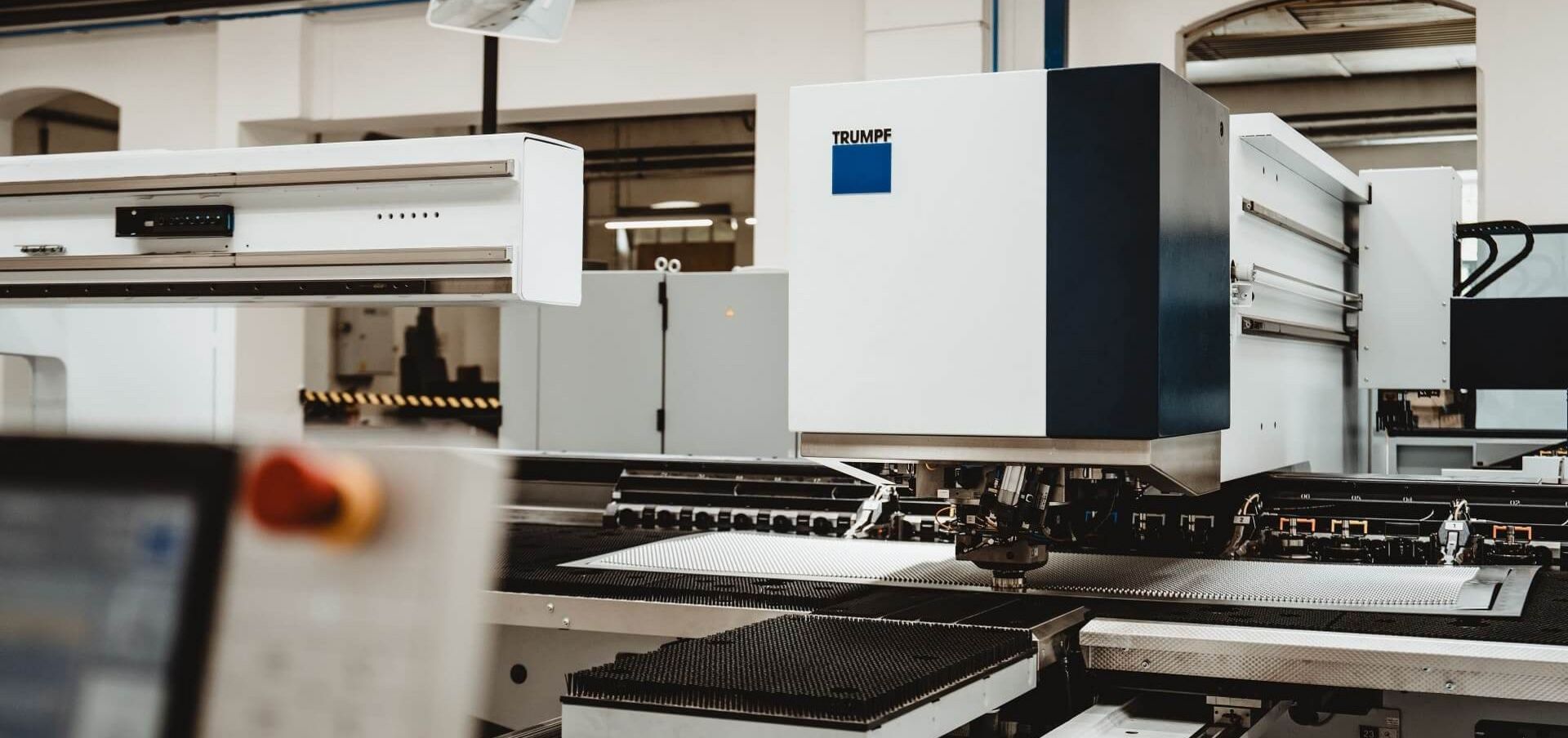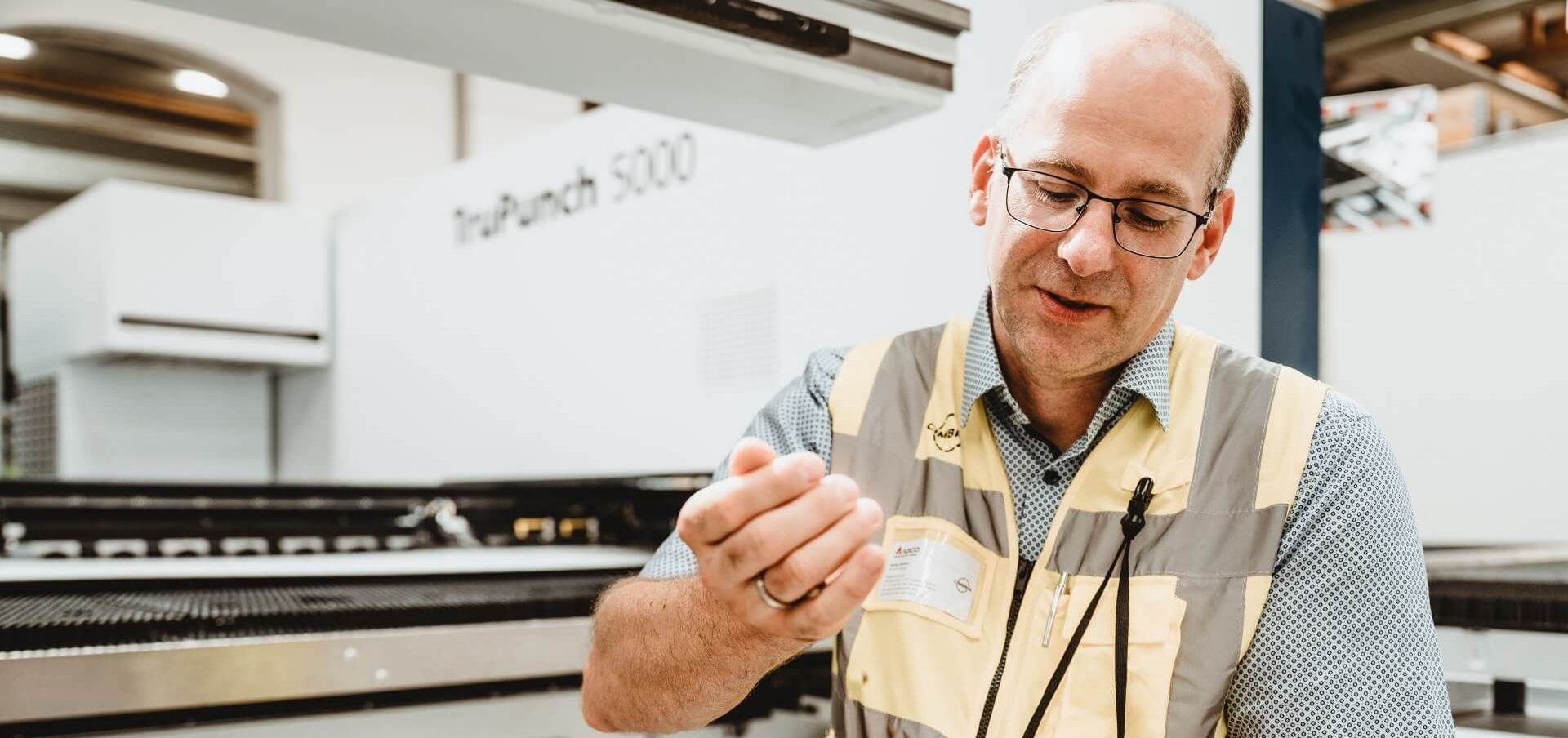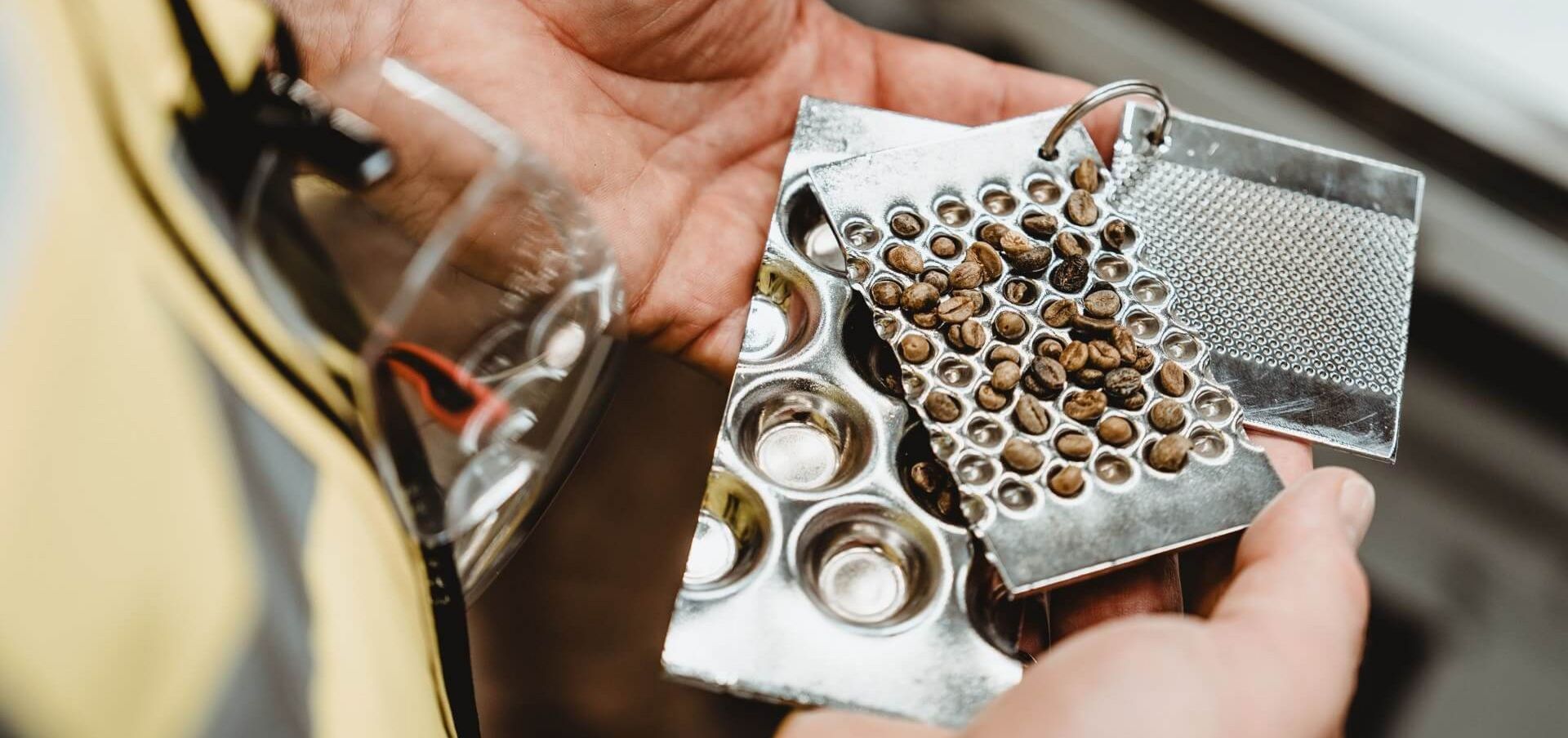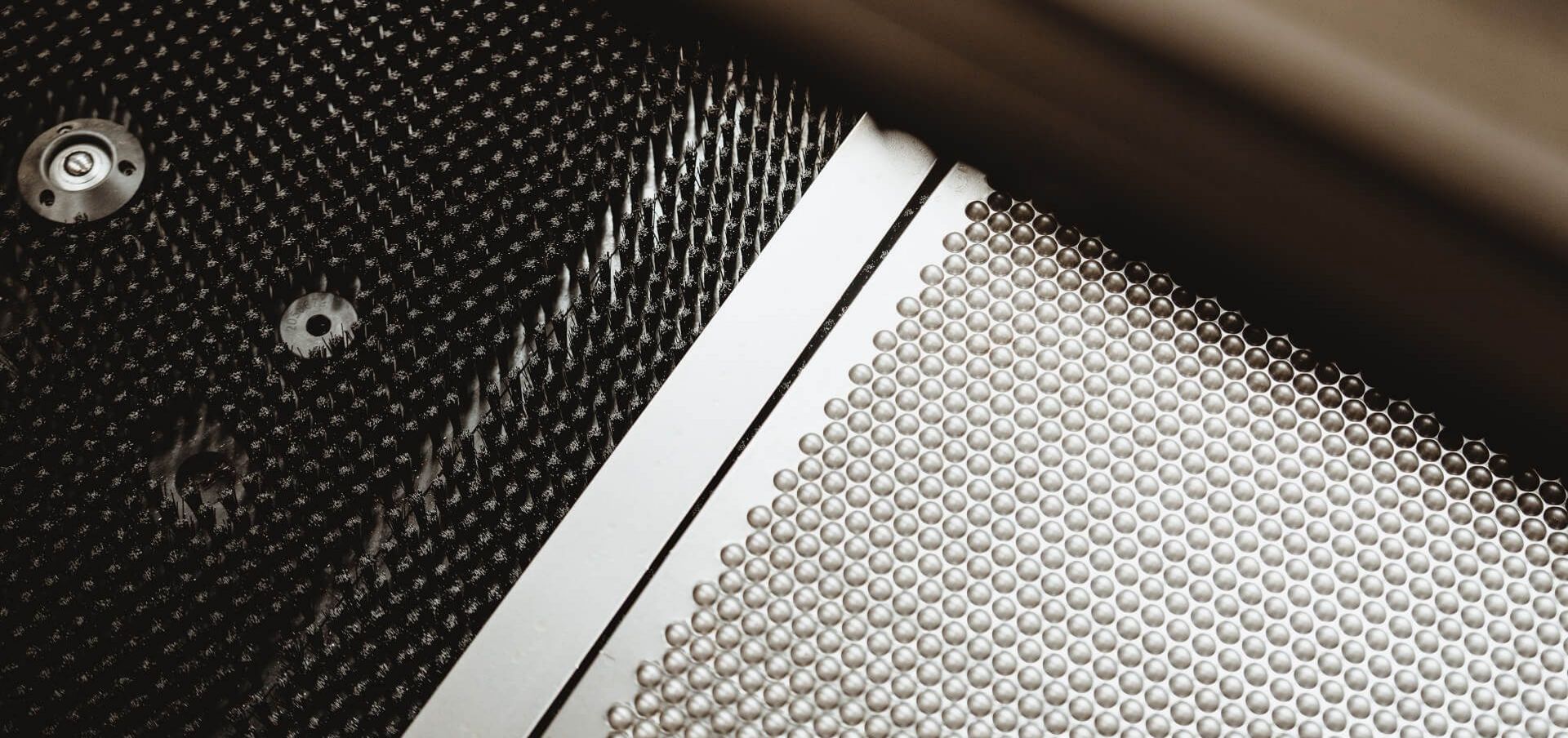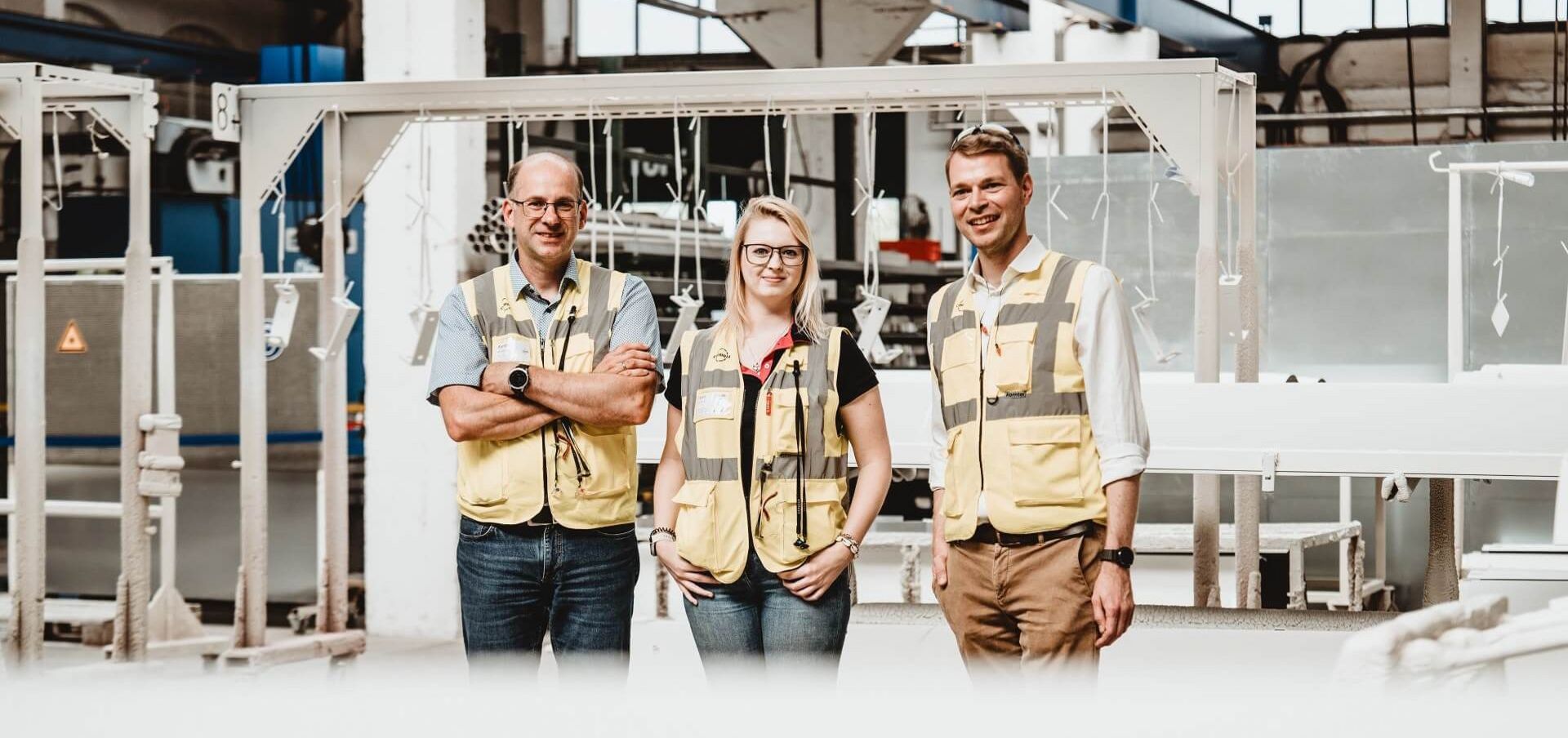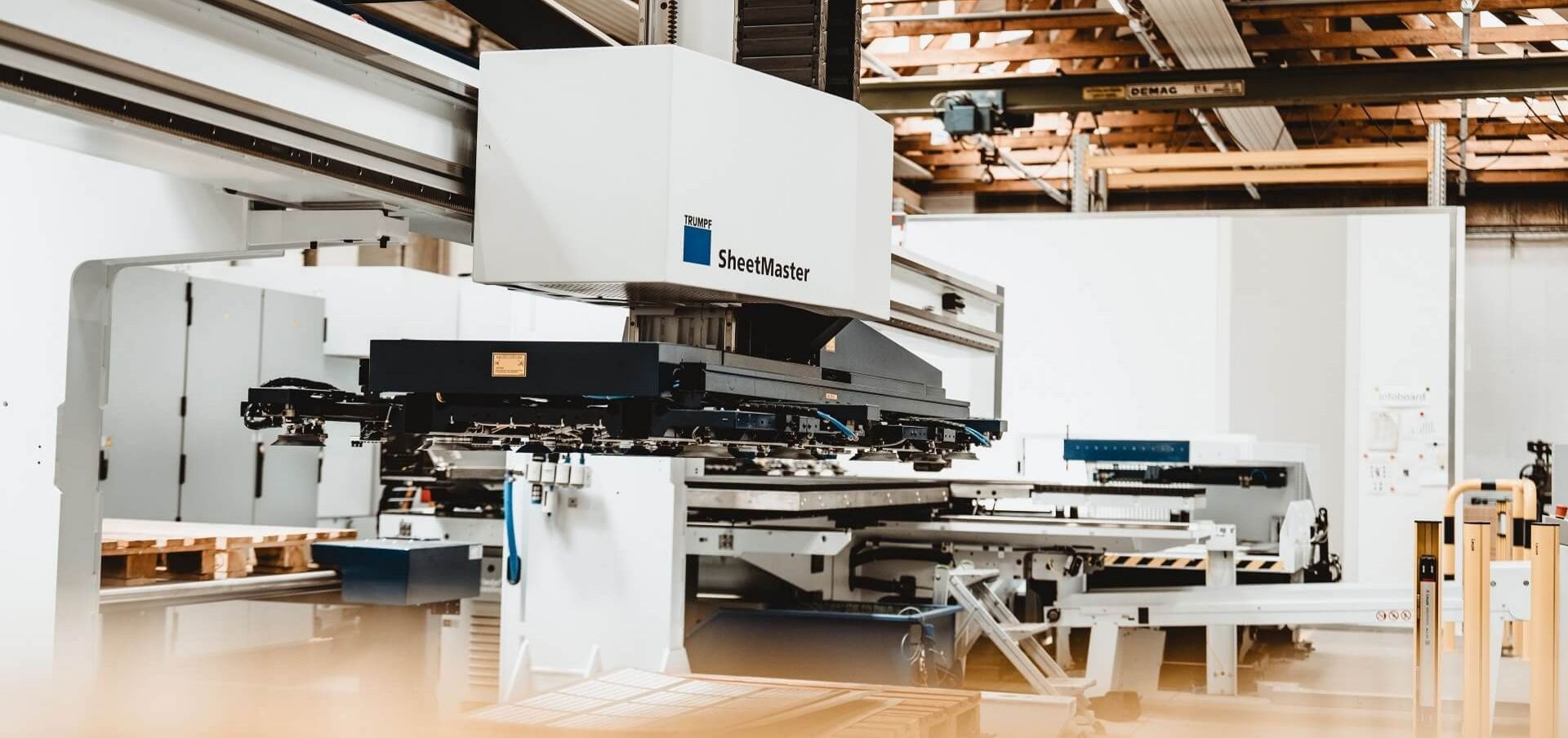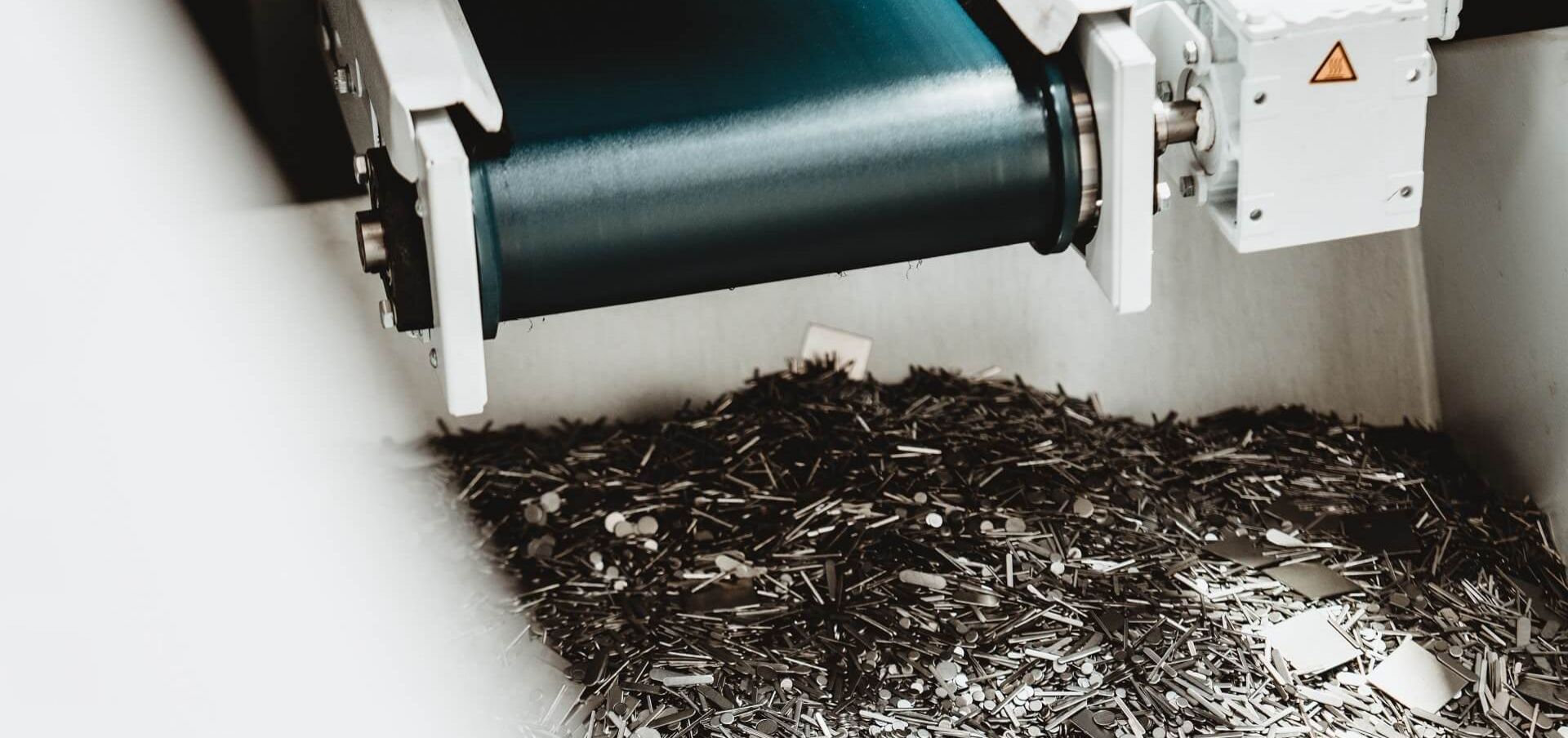The sheet weighs 40 kilos, which the production workers balance and clamp onto the old punching machine. Row by row, the machine pushes the sheet further. The punching head lowers evenly and presses the form into the thin material, always the same: twelve depressions, twelve more depressions, two meters in one direction, two meters back, until the sheet is full. The sheet metal that is produced here will later be used to sort seeds. The technology is 130 years old, it dates back to the early days of the Cimbria Heid company - and it will soon be allowed to retire.
AN INVESTMENT IN MORE EFFICIENCY
Nikolaus Heid designed the punching machine in 1894. Since then, the company has repeatedly modernized the technology. “But we had to face reality and realize that at some point it would no longer work,” says Patrick Jansen, Director Manufacturing at Cimbria. He plans to decommission two of the old punching machines by the end of 2024. “Of course it is bittersweet,” he says, ”the machines are part of the industrial history of the Heid company. But after 130 years, we also have to think about new technologies and the increased efficiency they bring.”
Heid Agrartechnik has been part of the Danish company Cimbria since 1989. The punching machines are one of the company's key technologies. “They process sheets for a trieur, a machine that later sorts grain or seed. That has always been one of our core competencies,” says Patrick Jansen. The trieur sorts desired grains from unwanted grains. The sheets are later formed into cylinders that rotate around a channel. The depressions in the tray - also known as “pockets” - hold the desired grain and transport it upwards. From there, it falls down onto the channel. Grains that do not fit into the recesses fall out of the cylinder again.
There are two challenges with the depressions: their shape and how many of them are on the surface. Depending on the desired grain size, a different depth is required. They range from the smallest depressions for clover seeds to 28 millimeter holes for sunflower seeds. The shape is not only round, it also resembles a drop depending on the seeds to be sorted. And a separate tool is required for each mold. “You can press a pocket relatively easily and quickly,” explains Austrian plant manager Günther Schwarz. “But pressing so many pockets onto a two-meter-long sheet is a technical challenge.”
In summer 2021, Patrick Jansen and Günther Schwarz began looking for alternatives to the old machines. And in September 2023 they can put the new punching machine from TRUMPF into operation. “The old machines were so sacred, we couldn't even imagine that a modern machine could process the sheet metal the way we need it,” says Schwarz. Cimbria made contact with ten providers. All but TRUMPF later dropped out.
“We made several trips to Cimbria Heid to implement Cimbria's requirements,” says Peter Sternat, TRUMPF Sales Manager for Eastern Austria, "and Günther Schwarz also visited our Customer Center in Ditzingen.” Together, they integrated the TruPunch 5000 into the layout of the current machine fleet and developed the first tool heads for the drop mold. “We have made progress step by step,” says Sternat.
BETTER CAPACITY UTILIZATION THANKS TO STATE-OF-THE-ART TECHNOLOGY
For Cimbria Heid, the new machine means an increase in efficiency. Work steps that used to be carried out on different machines are now performed by the TruPunch 5000. It punches the depressions into the sheet at up to 1600 strokes per minute. Active presser feet prevent the material from swelling during the process - eliminating the need for subsequent straightening. One function cuts the sheet to the desired size, another deburrs the cutting edges. Embossing tools mark the sheets.
The SheetMaster is now the one to move the 40 kilogram sheets - not the production employees. The tool change for more than 50 tools is also automated. Cimbria Heid produces the complex segment sheets for the trieur during the day in order to check the results. At night, the machine produces simpler flat screens without the need for personnel. “We can now utilize the machine much better - and our team is delighted with the new technology,” says Patrick Jansen.
Cimbria Heid has collected around 450 punching heads for various grain and seed shapes over 130 years. They also need these heads for the new machine. “We test every single tool to ensure that the sorting plates continue to meet our quality standards. That will take some time,” explains Patrick Jansen. What will happen to the old machines afterwards is still unclear. But the production manager is certain: “We will find a worthy place for them. Maybe they'll move into an industrial museum.”
About the company
Heid and Cimbria are today united: Cimbria Heid. In 1872, Nikolaus Heid founds the company in the Eifel region. After moving to Lower Austria, he develops tooling and sorting machines for grain. In 1989, the Danish company Cimbria takes over Heid Agrartechnik. Cimbria is a world leader in the industrial processing, handling and storage of grain and seed, as well as of grain, animal feed, food and other bulk products. Cimbria works closely with its customers to develop individual machines and complete turnkey solutions. The group has four production sites and around 900 employees. Around 140 of them work at the site in Austria.


